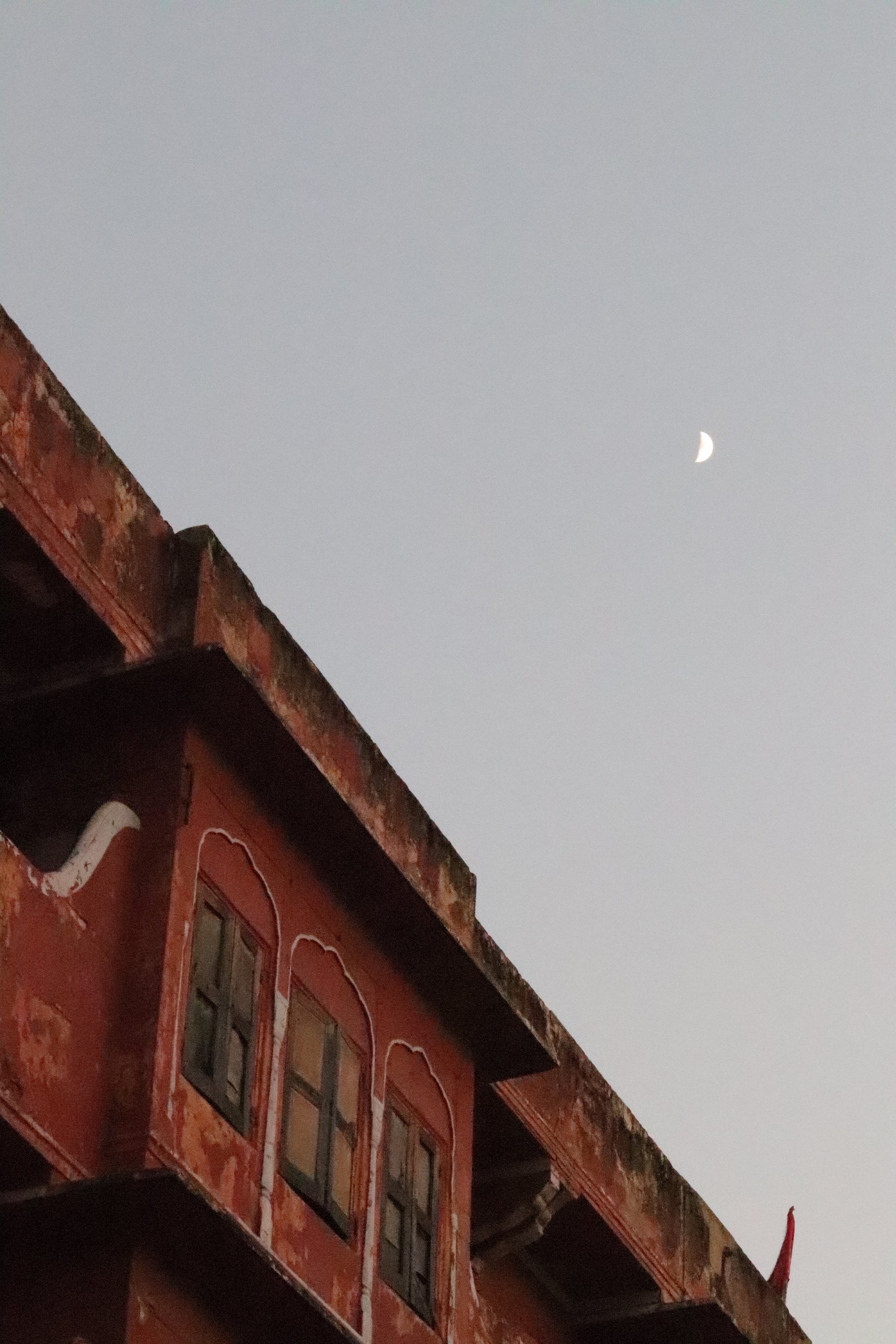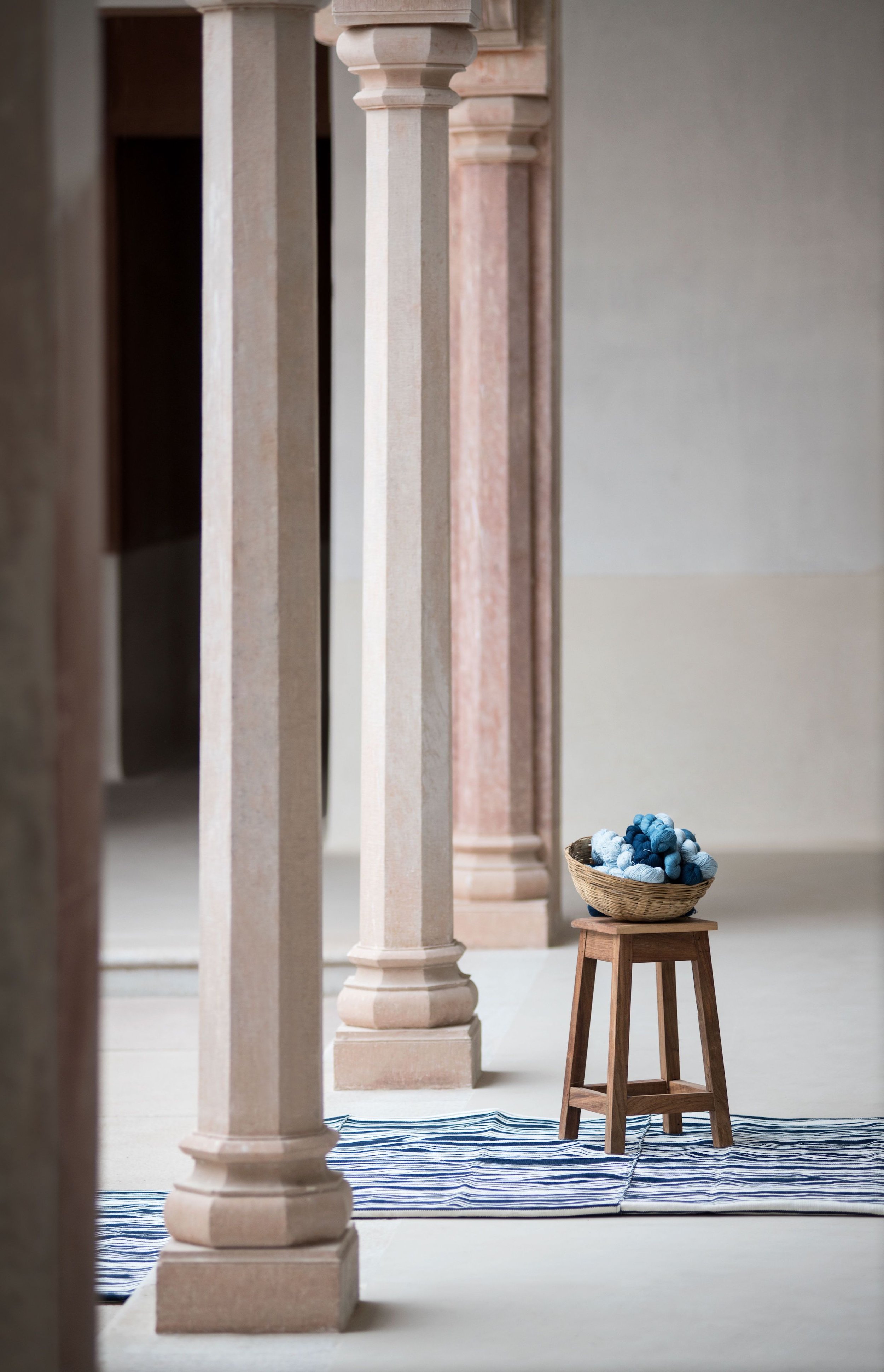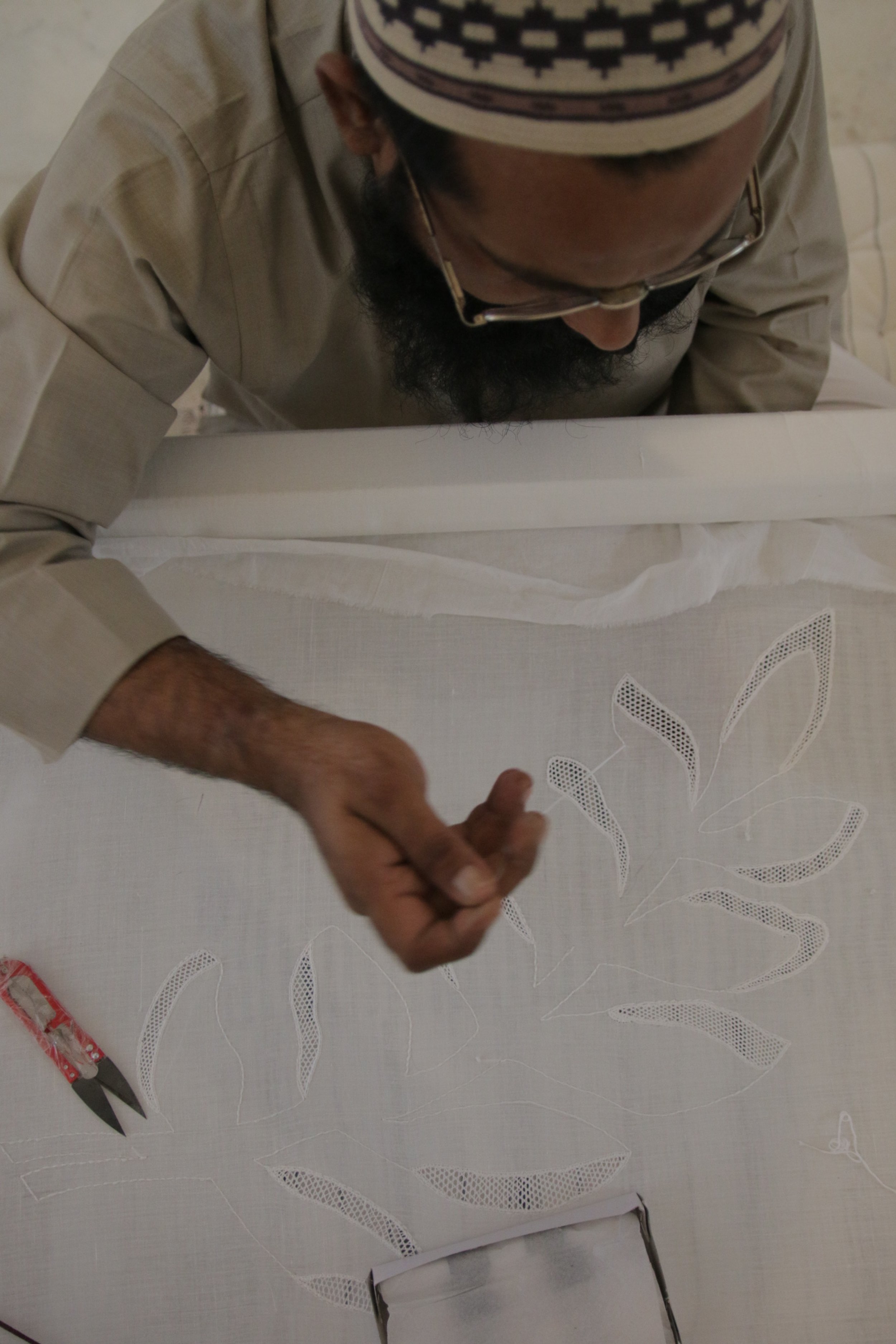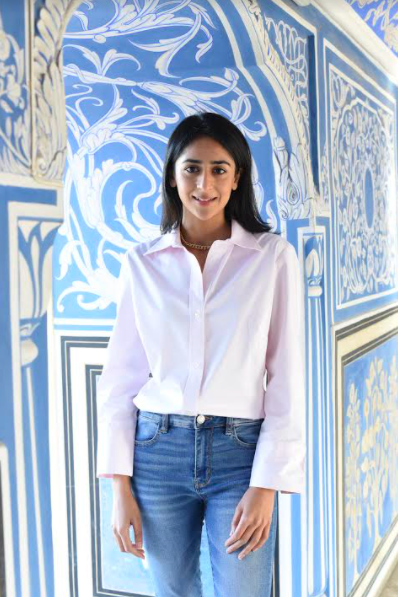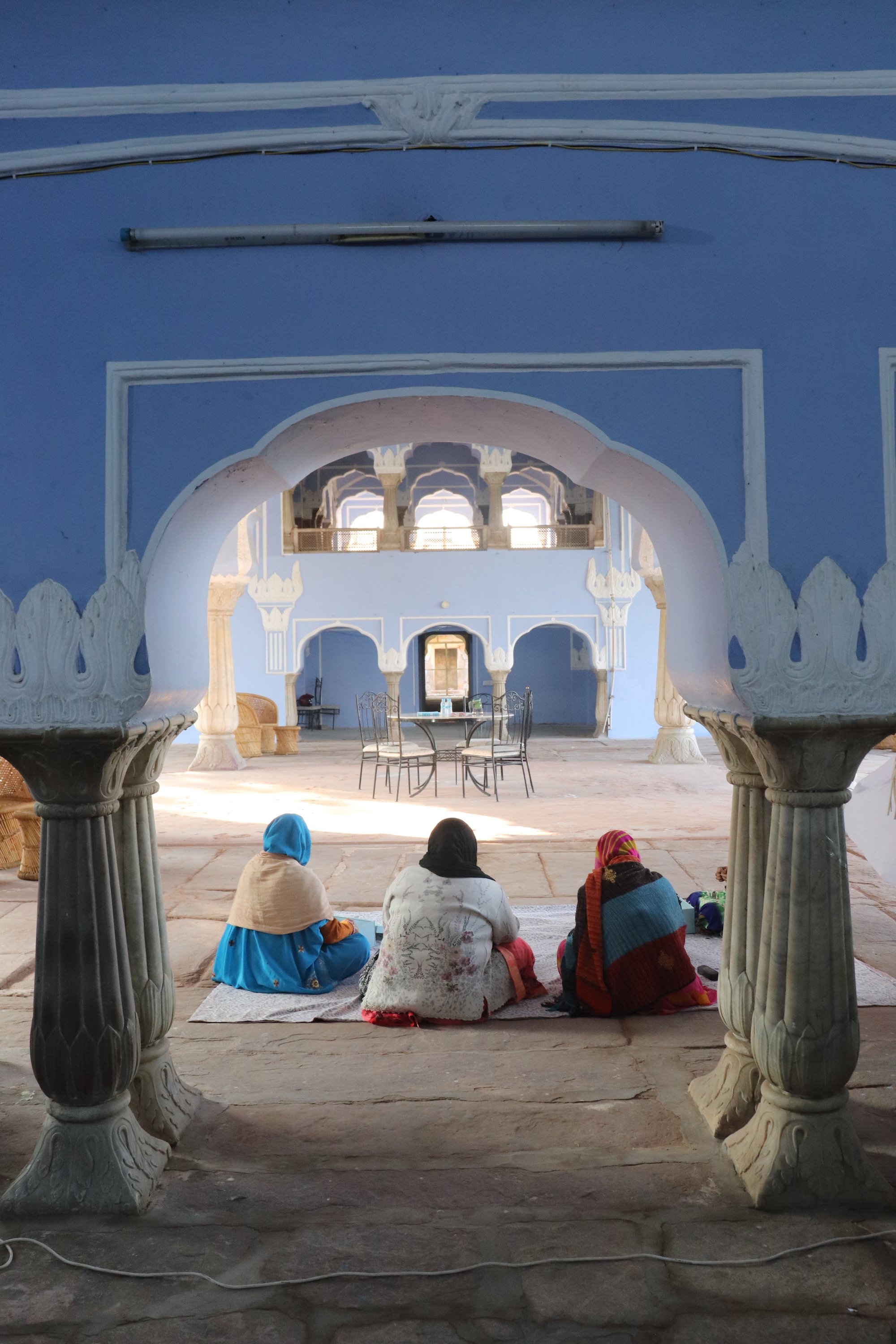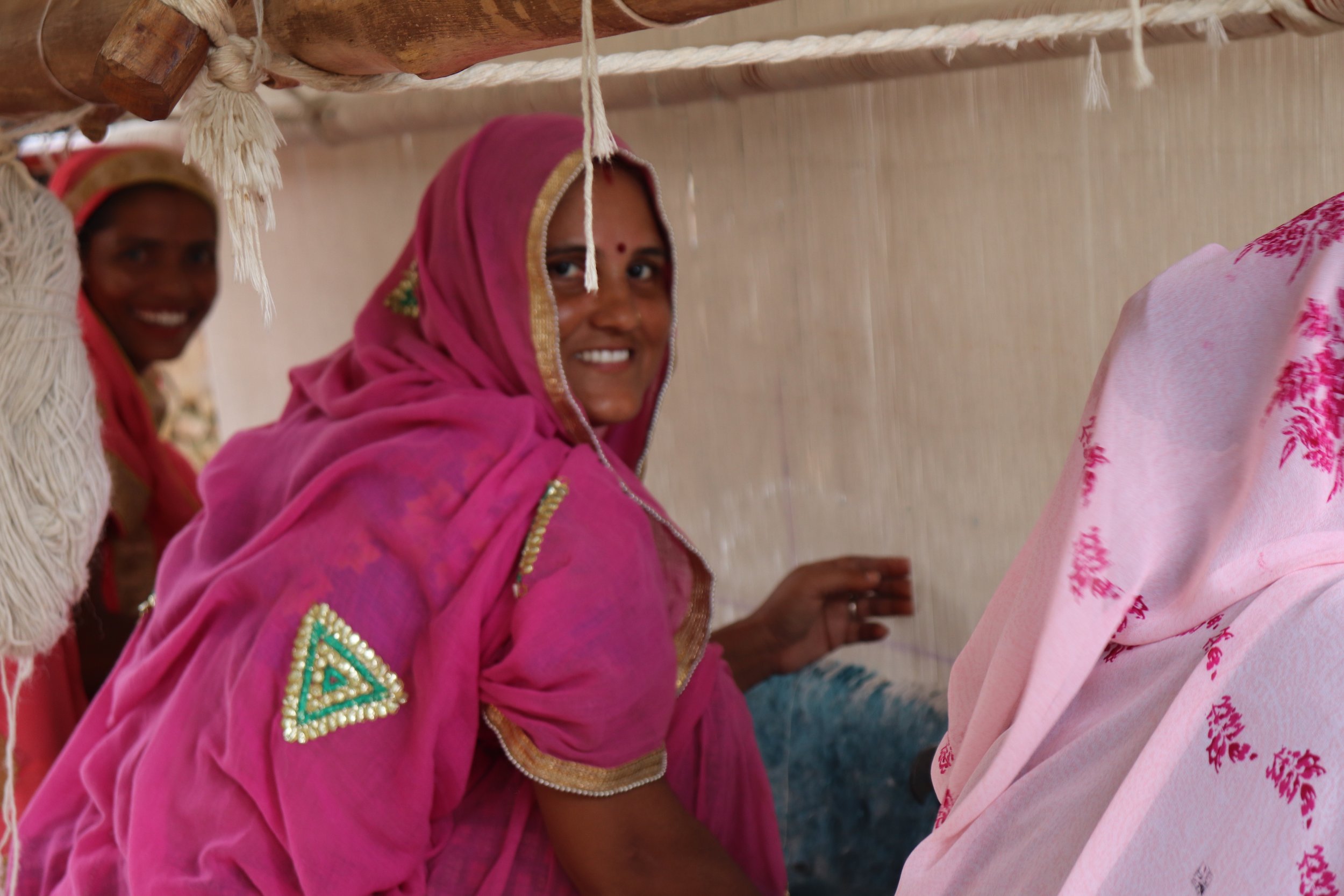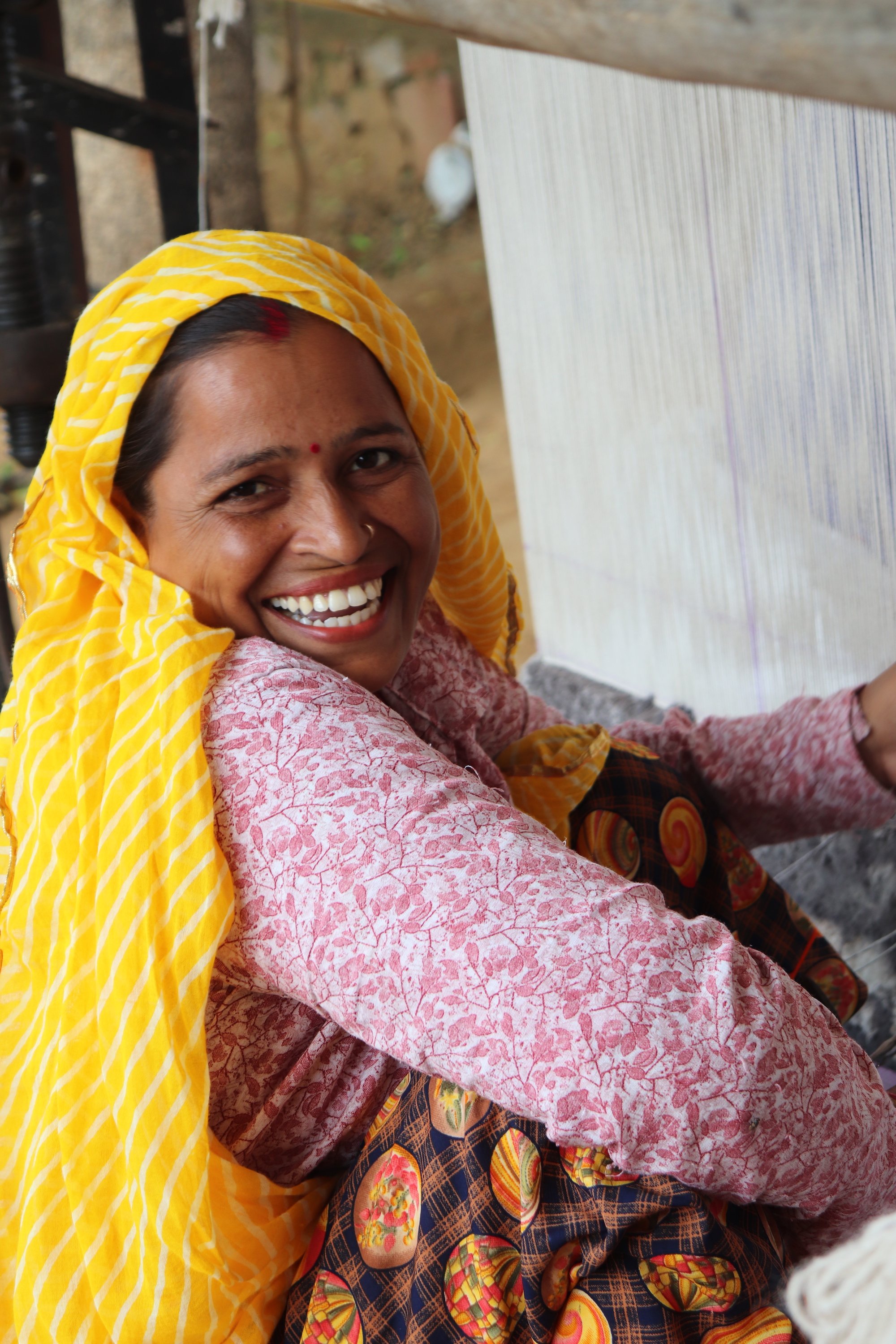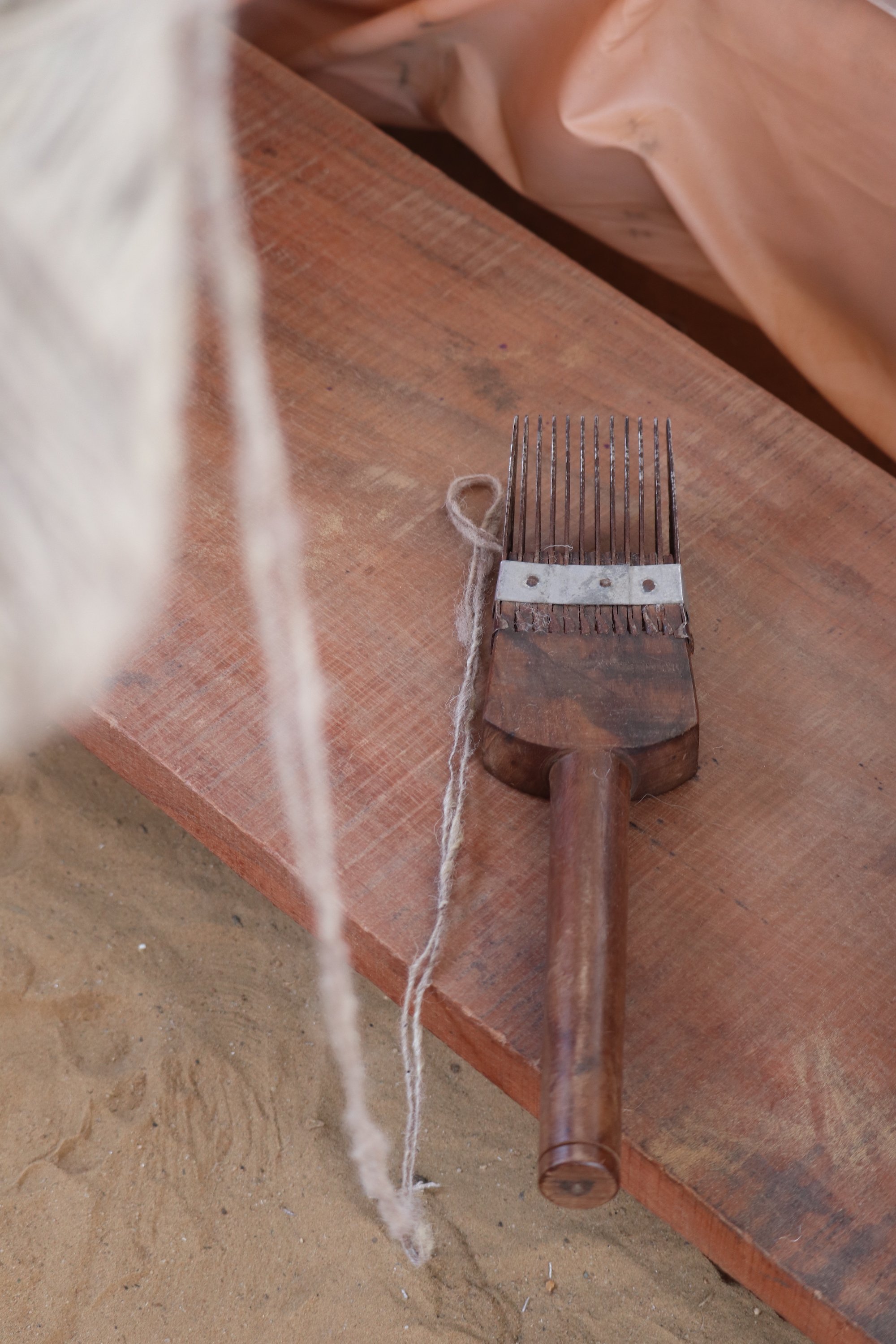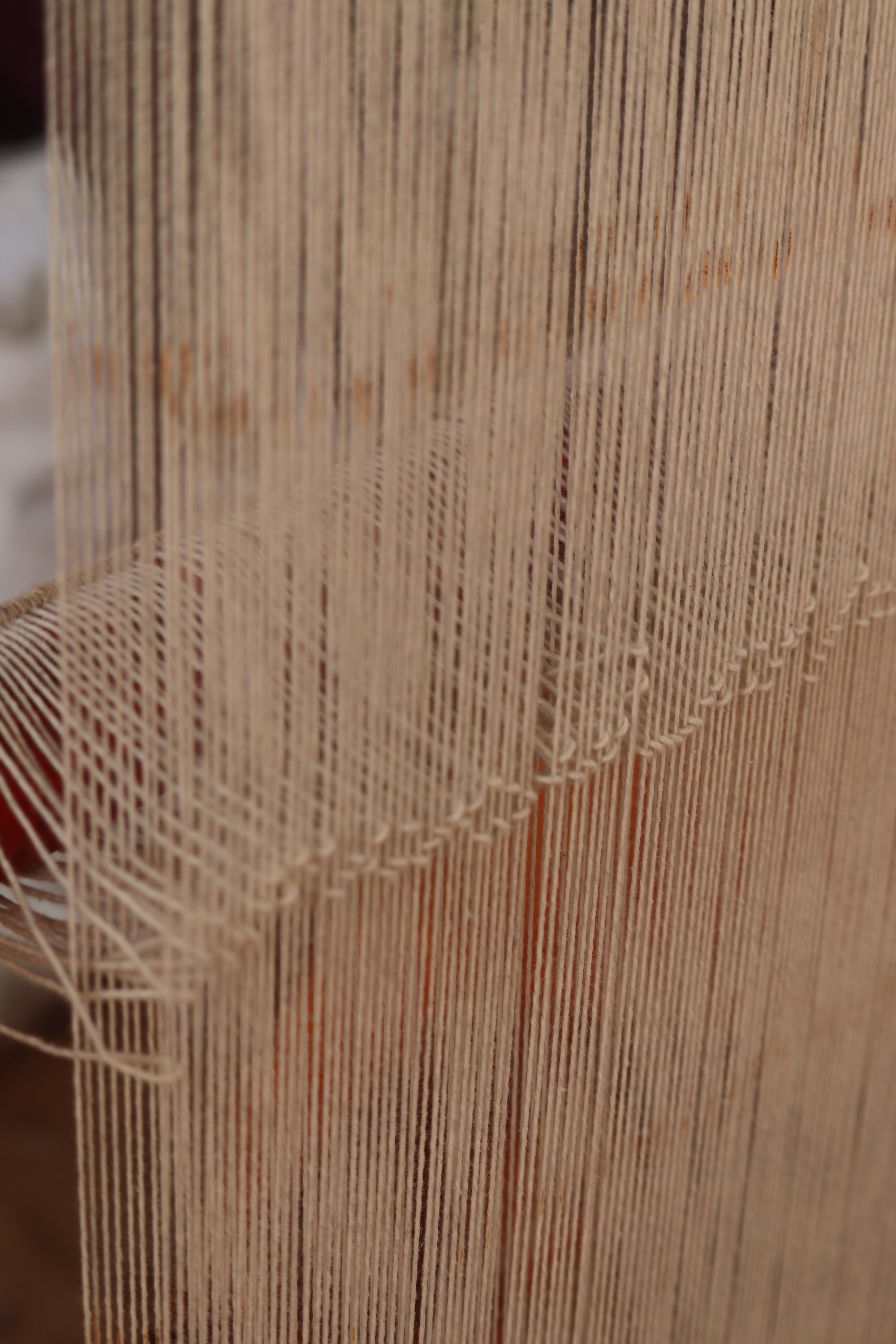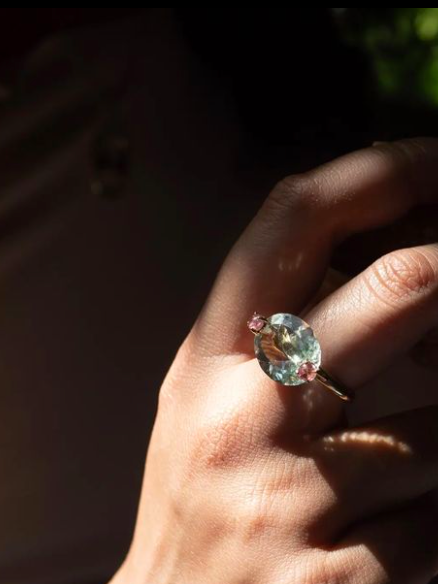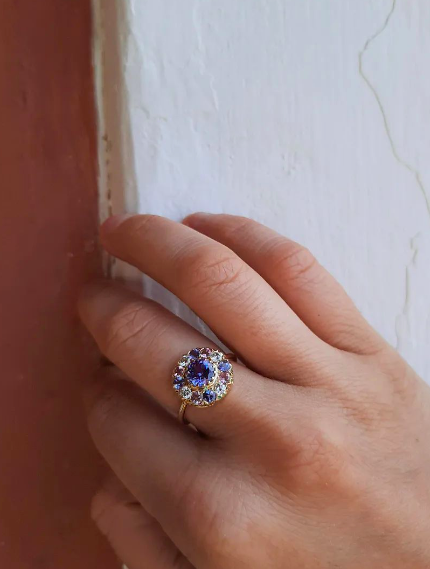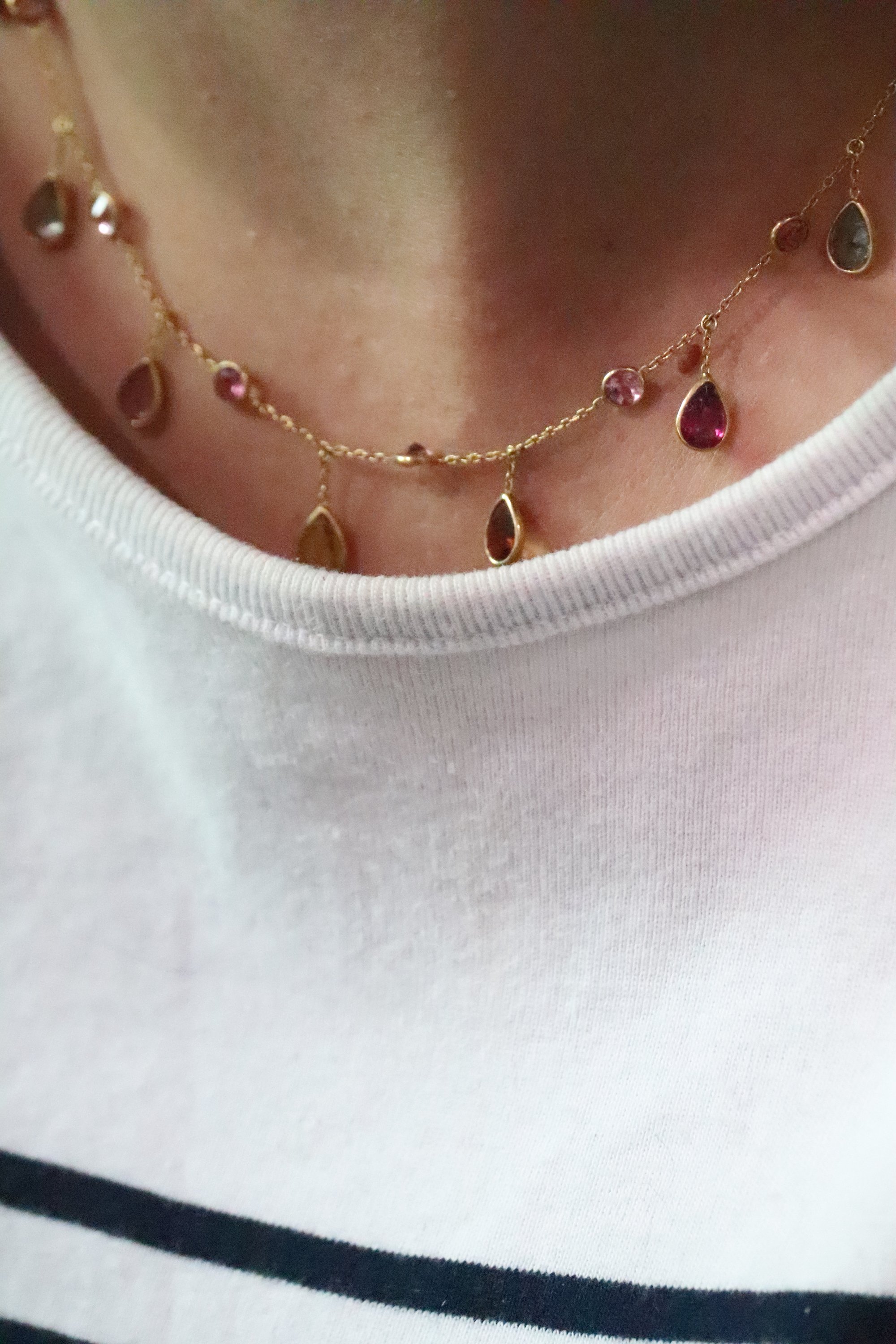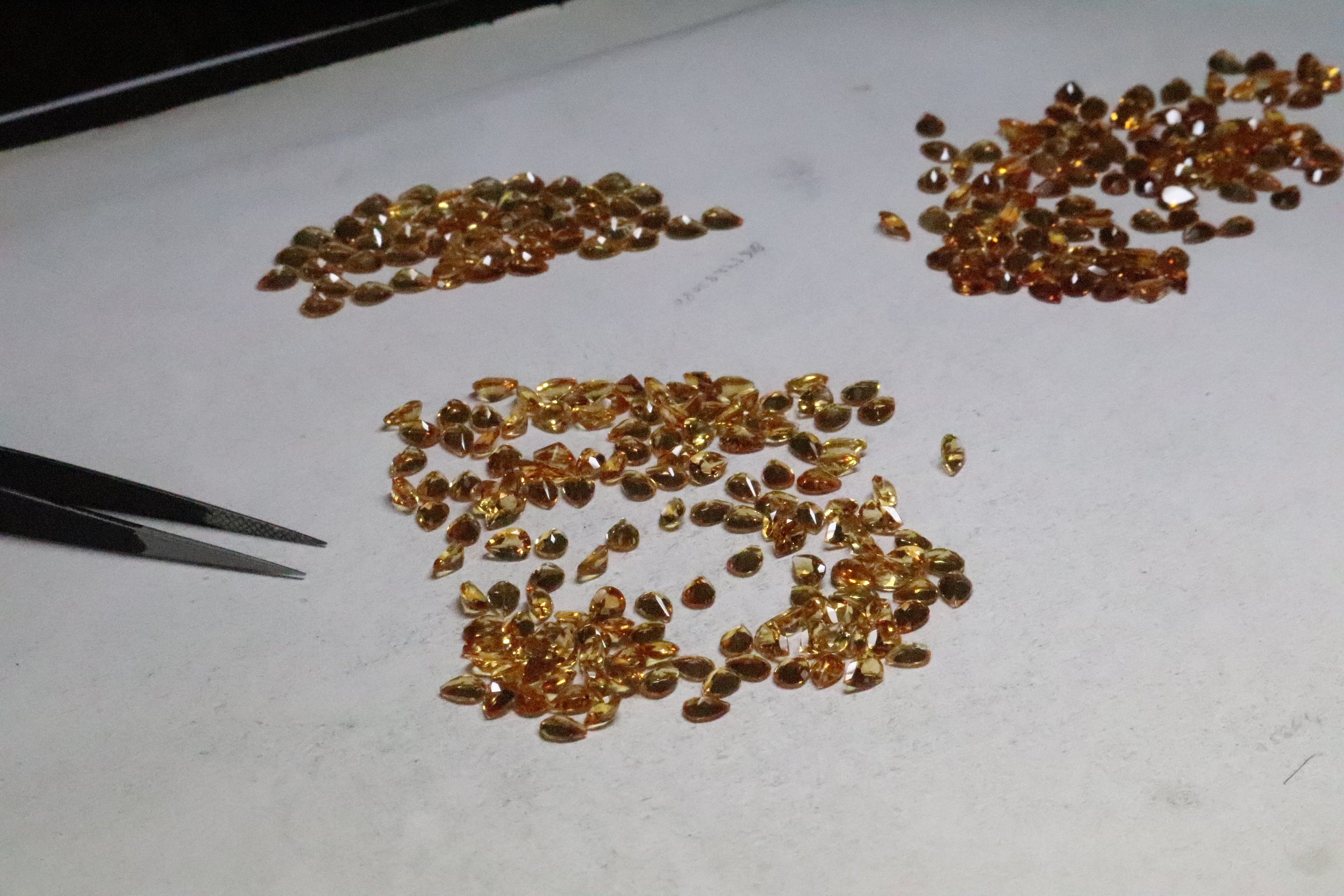Jaipur, the design capital of India
Jaipur, the City of Pink, resplendent with history and culture, never fails to charm you. Once the modus operandi of the Mughals and the Rajputs, this city is filled with archaic monuments that engrave the streets with remnants of the past while buzzing with art and craft forms that keep many a creative seeking for more. What used to be a slow paced charming city is today a creator’s sought after hub for experimenting with and delving into the world of craft and textiles rooted in tradition and indigeneity. The notion of Jaipur as a cosmopolitan city helps create a medial space between relativism and universalism, that produces common ethical values joining otherwise disparate communities.
The city is home to thousands of craftspeople practising diverse craft forms – from weavers to block printers to marble workers and bangle makers. These industries have been alive since ancient times and continue to exist despite evolving changes in manufacturing and global economy. Because of its unique vibrancy and its uncanny ability to make travellers and newcomers feel at home, designers and creative entrepreneurs from all across the world have been able to find their footing in Jaipur. These creatives, each with their unique visions and skill sets, have interacted with indigenous craft communities to design something new, born out of unhindered experimentation between historically rooted traditions and vibrant contemporary culture. In fact, this new direction of modern creatives of playing with the old and the new has come to emerge as the defining characteristic of homegrown design. Jaipur continues to provide ample space and opportunities to such new voices, paving a way to sustainability and equity that has elevated its multiple craft forms, some prominent ones being block printing, blue pottery, tie-and-dye, miniature painting, stone carving, papier mache, and ivory carving – to name a few! Designers and entrepreneurs bring with them cultural influences from their own geographies and are able to translate them in the localised context of Jaipur’s craft expressions.
What makes this city so sought after? The answer may lie in its ability to be flexible and give voice to new ideas and ways of things. Despite holding on strongly to the traditional, hyperlocal, and old world roots of the place, the people of Jaipur have been able to embrace a spirit of experimentation. We can only wait and see what new directions it will be showing to the rest of the country, and the world, in terms of design, craft, and aesthetic. The city is a muse, a story book waiting to be read by the world.
NILA HOUSE
Bridging Boundaries & Reclaiming Cultures
Nila house derived its name from the Hindi word for ‘blue’. It refers to the natural plant based dye called Indigo. It describes itself as an experimental space without boundaries between designers and artisans, allowing for a more fluid take on design and creation. Located in a busy corner of Ashok Nagar in Jaipur, the architecture of this traditional Rajasthani building that has come to be Nila House is flanked by luxurious, white courtyards beneath the beaming sun.
The foundational mission of the Nila House is to bring back the culture of the natural Indigo dyeing process which has been replaced in an increasing speed by the chemical dye industries. Indigo dates back to about 5000 years when it occupied an important spot in the cultural production of India, later exploited by the British Raj at the peak of the country’s colonization. Nila House, with its name and purpose, gives the power of narrative and practice back to the artisans.
Sustainably blue
Nila is dedicated to the resurgence of sustainable fashion all over the globe today. By preserving the endangered crafts of hand spinning, handloom weaving, and natural dyeing, it becomes a part of this much needed dialogue of cultural resurgence through material practices rooted in geography and local factors of production. These crafts are regenerative not only for the environment but also for providing meaningful livelihoods to artisan networks in Jaipur and other remote areas of India. In India, Nila House supports communities of farmers and artisans by providing consistent support through vocational training programmes from their studio space while also connecting with NGO partners doing incredible work in the grassrootsy.
The process
Nila House has very quickly emerged as a nucleus of knowledge and conversation on preserving handwoven textiles and taking the sustainable design process forward. Their work is dedicated to providing a hands-on learning experience of traditional knowledge, which their creatives are committed to fulfil. Nila House comprises a compact library space that accommodates an expansive academic research on craft, design, and textile. The site is reminiscent of a Mughal karkhana, a workshop centre established during the Mughal Empire for craftsmen with different skills coming together to experiment and merge their traditional artisanal expertise.
Bridging traditions
Nila House places emphasis on residency programmes to provide opportunities for artists and designers from across the globe to engage with local artisans, form a network, share their knowledge, and develop through these collaborations. They display the productions from these residencies at the front shop along with Nila House in-store clothing line. Undoubtedly, this place is a celebration for everything that represents Jaipur’s craft culture but also the spirit of craft and creatively on the whole. Which is environmentally sensitive, novel, contemporary, andsustainable, merging old world techniques with new age perspectives and value systems.
photos by nilajaipur.com
PRINCESS DIYA KUMARI FOUNDATION STORE
Gauravi Kumari is a third-generation princess taking forward the royal legacy of her mother, Princess Diya Kumari. Gauravi is pursuing her studies from New York University, with majors in Media and Communication and a minor in Fashion Business. Growing up in the shadow of her mother introduced her to the world of politics early on; she is now stepping out to make a mark in the world as a woman entrepreneur. Since early last year, Gauravi has been working for the Princess Diya Kumari Foundation, a philanthropic social outreach initiative founded by her mother that aims to transform the grassroots by involving underprivileged women and girls in meaningful, sustainable work. The foundation today has evolved from a local organization to a global one. Its head office, located in Badal Mahal (Palace of the Clouds), was built in 1727 as part of City Palace, Jaipur. The old and the new constantly interact within the walls of the foundation and keep the members abreast with contemporary issues. Gauravi is involved actively in the new store front of the Princess Diya Kumari Foundation that employs the rural women trained by the foundation in making traditional, craft-based items that reflect Rajasthan’s colourful heritage. Gauravi, undoubtedly, has been influenced significantly by Jaipur’s local traditions and she lends traditional fabrics a modern twist by adapting them to dresses, kaftans, shorts, and tops.
Through their stores in City Palace and online portals, the foundation is working actively in providing the women with sustainable employment while also promoting traditional practices like block printing, embroidery, and more. Gauravi is motivated to take the work of the women artisans to a global audience, which becomes a means of promoting education and gender equality in India. Her love for fashion and the art of timeless styling that she so gracefully picked up from her mother lend her work an easy grace and honest drive – values required greatly in today’s scenario when the need to think global and act local has never been more relevant. Our conversation with the princess and spending a day at one of the workshops held by the foundation gave us a peek into the lives of the women who have been a part of their initiatives and received the professional training of crafting quality products.
In her words /
Background
My hometown, Jaipur, was the major influence I had while growing up. I have been fortunate enough to have been born in a family that holds a history of rich culture, art, architecture, and heritage. From the royal palaces to the narrow lanes of the Pink City, everything holds inspiration and a design aesthetic.
Princess Diya Kumari Foundation (PDKF) was started by my mother in 2013. It has always been close to her heart for the cause it was started — to empower the women of Rajasthan. I remember visiting the foundation with her, as a child. I was always fascinated by the handmade items the women made at the foundation. During my vacations, I would spend time interacting with the women artisans and try my hand at some crafts. I have always been passionate about the cause of women empowerment and I wish to be able to contribute to the foundation with my knowledge and exposure.
PDKF Webstore
Claire Deroo, a very talented designer from France, who also happens to be my friend, and I came up with the idea of creating the PDKF store. We are both passionate about the cause and felt there was a need to bridge the gap between the amazingly talented women of the foundation and the global audience. For us, the idea to create a store began with the thought of reviving traditional crafts and creating contemporary products. At PDKF, the women are trained in traditional crafts such as gota patti work, appliqué, thread work, and so on. We felt there was a huge scope of improvement in choosing ‘what to create’. We want to use our creativity and skills to nurture their design sensibilities by helping the women artisans develop new designs, patterns, and colour schemes. Hence, we decided to create a range of products which are globally appealing but also carry the story of traditional crafts.
We plan to work towards enhancing the brand of PDKF as well as giving direction and lending insights to the women artisans of the foundation. We want to engage with and help more women, not only in Rajasthan but also across the country by expanding the reach of the foundation. PDKF also has programs such as education initiatives for underprivileged girls and menstrual hygiene programs for women. We plan to build on these areas to ensure the all-around development of the foundation.
Contemporary Jaipur
Indian Designs have been a source of inspiration for a lot of people across the world. I feel blessed to belong to Jaipur — a city which is a design lover’s destination. Unlike many other cities, the old and new coexist here in harmony. From the forts to its significant craft centers, known to the world for its block-printing, metalwork, blue pottery, and fine jewellery, Jaipur is truly the ultimate destination for design inspiration.
JAIPUR RUGS
Carpets and rugs have been an integral part of Indian history. Woolen carpet weaving can be traced all the way back to the medieval period in India, prominently the Mughal era. However, over the course of time, the Persian style of carpet weaving blended with local culture, art, and architecture and took a life of its own in certain areas of the subcontinent. Some of the most elegant carpets were created for the Mughal Emperors and their courts, each unlike the other but infused with a common magic of colour and design. Carpets from Rajasthan are especially well-known for fine-quality, hand-knotted woollen fibres.
To craft lovers and enthusiasts, Jaipur Rugs needs no introduction. Based in the historic Pink City of Jaipur, Jaipur Rugs employs over 40,000 artisans, and continues to expand and provide opportunities to craftspeople. Since its inception in 1978, Jaipur Rugs has grown to stupendous heights, and happens to be one of the largest makers of hand-knotted rugs today. It was one of the first craft organizations to take Indian craft and creation to a global platform, making the history and living traditions of rug making prominent across the seven seas, in Europe and America, bringing in much required visibility and recknoning to our indigenous traditions.
The artisans of Jaipur Rugs create handmade rugs with fibres such as wool, silk, bamboo, and viscose, and aid in renewable means of production. A day in one of the villages or workshops of this organization can offer insight into the working process of the artisans; each piece of rug is created using traditional methods of hand carding, without any use of machinery. This manual way of separating and straightening wool fibre is followed by hand spinning, cleaning, and knotting the fibre by to get the final product with its characteristic feel and texture. The typical production cycle of a rug consists of procurement, processing, spinning, weaving, and finishing the product. Oftentimes, several hands will be focused on a single rug, taking up to four months to complete. From beginning to end, the supply chain of the company believes in and values the production to be in-house.
The details
Jaipur Rugs invests in superior quality of yarn and dye in order to create a piece of incomparable quality. Chokla, the finest carpet-wool breed, also known as Chhappar or Shekhawati, is native to the districts of Churu, Nagaur, and Sikar in Rajasthan. The finer rugs have more knots per square inch while the thicker rugs have fewer knots; it usually runs from 36 knots on the lower side of per square inch to the highest count of 196 knots. It is a tiresome and laborious process, usually taking 80 to 90 processes from procurement of the material to the final product of creating one rug! Natural dyes are used in special pieces and collections that are created around that aesthetic. The ephemeral nature of natural dye and the delicate process of dyeing the yarn in this process (for instance, one can dye yarns in natural colours for upto 5kgs in a batch) demand more time and labour, and hence the exclusivity of products created using them.
Social impact
Moving beyond the craft, what is more inspiring is to learn about the creators, their narratives of financial and social empowerment.. Initially a male-driven art and profession, the craft of weaving has today opened up to the women of the villages as well, with more and more women going to the workshops and factories to work. The village model of Jaipur Rugs has been able to, over time, challenge restrictive notions of women’s labour and mobility, which in our eyes is an achievement all by itself. In addition, the start of doorstep work method helped even more women to participate and find opportunities for personal growth and development as well as financial independence.
Growing agency
While men are still largely part of the finishing process of the final product, women have predominantly taken over the craft. This has also helped women gain confidence in the work that they do. They have the status of a full-time employee as they are paid a fixed salary monthly rather than on commission, and there is no reduction for mistakes. The mission is to preserve the legacy of craft culture and provide training for young talents. Educational and training programs have inherently honed women’s leadership skills and confidence, and helped subvert traditional gender imbalances. The sustainable cycle of doorstep entrepreneurship and fair wages have helped preserve the dedication and passion of these creative artisans.
Defining luxury
Craftsmanship today is transforming the definition of luxury by sharing a relationship with sustainability. Global designers are increasingly working with artisans and incorporating handmade practices in an effort to create authenticity of design and practice. The key to addressing discrepancies and ensuring that these traditions are not dissolved forever is to engage with the soul of craft culture more and more and disseminate traditional, indigenous knowledge. It is not the value of the product where the luxury lies but in the craftsmanship and experience of creating it. In contemporary design practices, the human value chain, therefore, provides a distinct opportunity to sustain existing as well as future generations of artisans; the trick is to find a balance between quality management and aesthetic.
Creating value
With sustainability becoming the new norm, craftsmanship becomes the perfect channel. Rugs come from everywhere; as a utility and decor piece that literally transforms space, rugs have been objects of trade for hundreds of years. Ornate rug patterns and weaving techniques can be traced to the early centuries, along with thickness, fabric quality, and thread count. Through the talent and philosophy of weavers, Indian rugs definitely have an undeniable presence in the global consciousness of design. The transparency in the very process of weaving a carpet makes the story and the finished object all the more intimate and a unique experience for the beholder. Bringing the weavers to the forefront of their design, Jaipur Rugs has been able to uphold their voices and identities.
Imaan Paris
Jewellery has been an intrinsic part of civilizations since time memorial. Across space, time, religion, culture, class, and gender, people have loved to adorn themselves with beads, gemstones, and metal, all carefully engraved and inlaid with motifs and designs that convey not only beauty but also meaning. The adornment of specific types of jewellery reveals one’s identity and lends stature to the person owning or wearing it; it also provides a sense of personality. It will not be too far fetched to say that jewellery, like textiles, provides individuals with language to communicate with people, with different communities and groups occupying different hierarchies in society.
The importance of jewellery in the realm of material culture is incomparable, therefore. The appearance of popular and sometime globe-famous jewellery streets are a common phenomenon in the historical cities of India, especially those that were part of significant erstwhile kingdoms. One such place is the Johri Bazaar, Jaipur’s pride in the stunning amalgamation of gemstones and jewellery it harbours, all crammed in tiny emporiums. This majestic street is a testament to the vibrant jewellery tradition of Rajasthan and more specifically of Jaipur.
Nurturing new-age designers
Our indefinite walks through the Johri Bazaar exposed us to some scintillating jewellery, but more than that it makes one realize the commitment it takes for a community to preserve the material heritage and take it forward in a manner that continues to draw people across changing societies. A very interesting rendezvous we had was with the craft atelier of Eleonore, a French jewellery designer finding foot and inspiration in the design culture of Jaipur’s jewellery tradition. Living in the city for the past 7 years, she has been able to closely study the evolving culture of jewellery making, which culminates in the East meets West through her brand, Imaan. Eleanore has been working with local artisan communities to formulate a design language that utilizes the opulence of Jaipuri, Indian aesthetic in jewellery that identifies as belonging to the West. The ready availability of quality gemstones in Jaipur of course makes the creative process full of possibilities, with ample room to make creative detours when required.
Innovating the handmade process
In Imaan’s assertion of language and precision, the person of reckoning would be Rajdeep, a jewellery maker and designer in his own right who unravels all that Jaipur is through his keen sense of craftsmanship. Rajdeep hails from a family of jewellery makers, learning the craft growing up and gathering a vast amount of experience far beyond his years in the business (25 years in the field is no mean feat!) He owns Goldsmiths of Jaipur, with a focus on the ancient craftsmanship of Marwari jewellery and a vision to make it relevant today.
Our time in a jewellery making workshop spent alongside Rajdeep’s expert display of the nuances of the handmade process that goes behind the making of each piece of jewellery was breathtaking and revealing of details. The aesthetic and cultural possibilities of Eleanore’s own background provides Rajdeep with a canvas of innovation that helps blend two contrasting traditions and create something entirely new in the process. This is the spirit of Johari Bazaar. This is the spirit of Jaipur.
Inherited legacies
The city, undoubtedly, is steeped in tradition and old-world craft techniques, it also readily opens up to contemporary taste and thinking. While most jewellery stores in Johri Bazaar are run by families as inheritance, younger generations have taken a keen interest in blending the traditional with the modern, in terms of both technique and aesthetics. So the next time you are in Jaipur, visiting Johri Bazaar may be a worthwhile thing to do. In the midst of this buzzing, intimate marketplace you could find your next design inspiration and an ecosystem that will enable you to play with your imagination.

